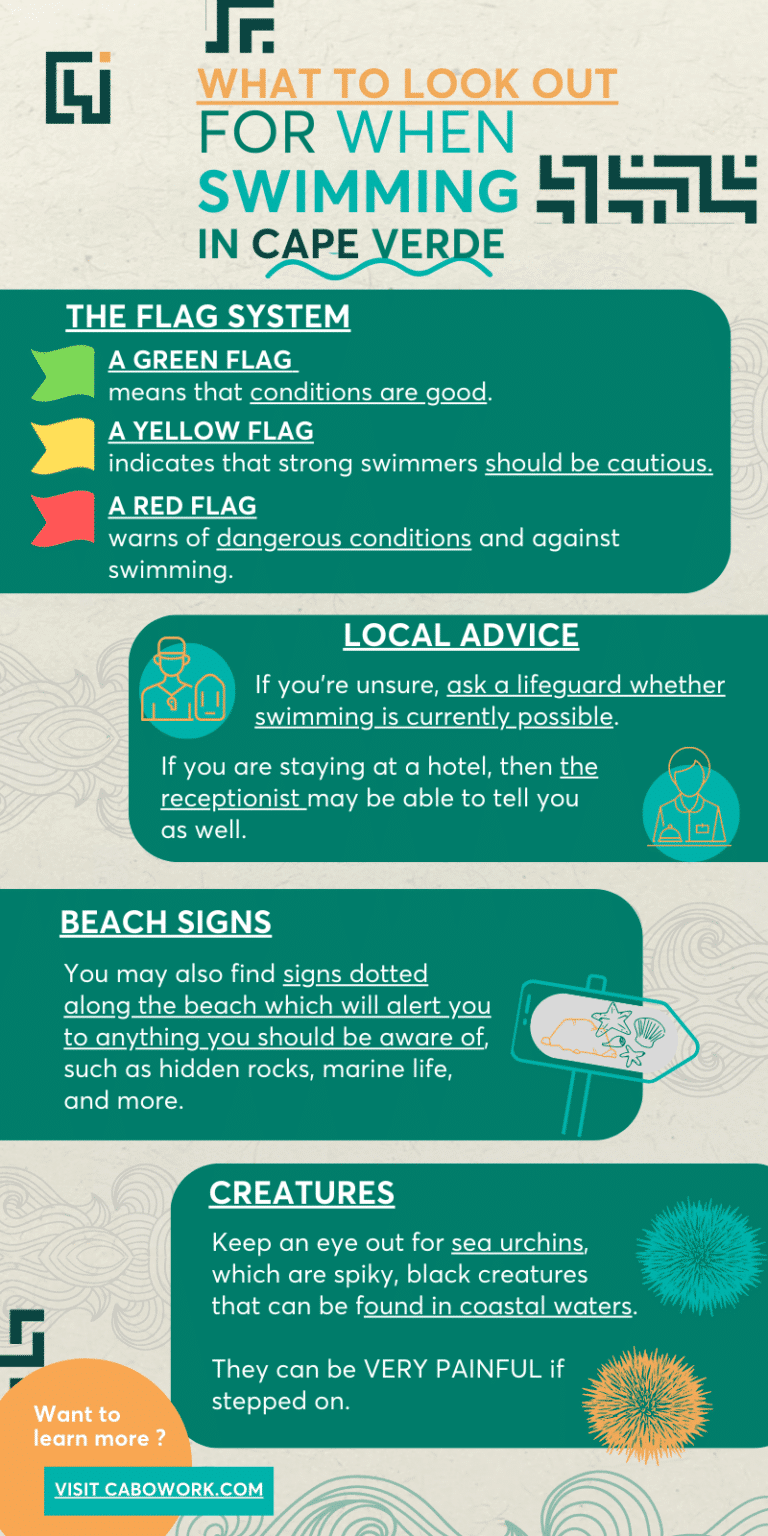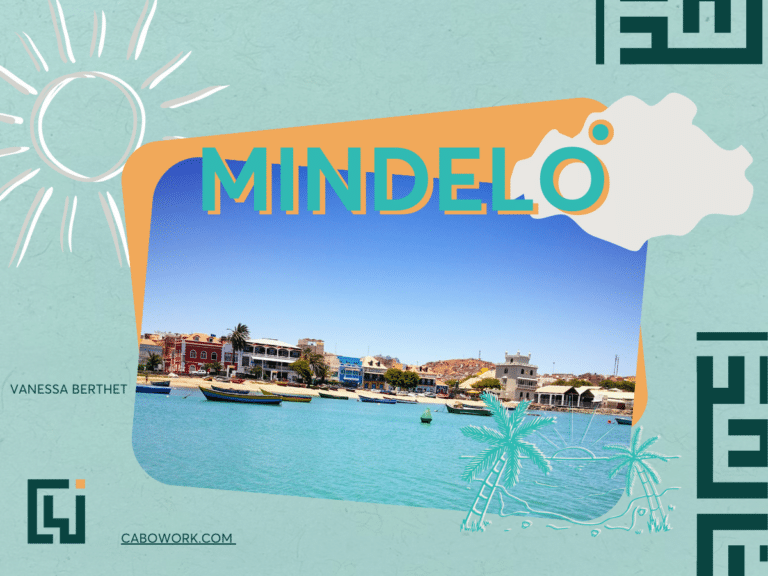Key Takeaways from This Article:
- Cape Verde has some incredible beaches, but not all beaches are considered safe for swimming.
- Sea conditions for swimming depend on the weather and wind, so it’s important to check conditions before you swim.
- Look out for coloured flags at the beach. If there are none, you will need to make your own judgement.
- Our favourite spots for safe swimming include Santa Maria Beach on Sal Island, Tarrafal Beach on Santiago, Praia Clarinha on Santiago, and Laginha Beach on São Vicente.
- It’s a good idea to avoid swimming in certain areas like Santa Monica Beach on Boa Vista Island due to strong currents.
- The best time to visit Cape Verde for swimming is between May and September, when the winds are at their lowest and the sea is calmest.
Is it Safe to Swim in the Sea in Cape Verde?

A trip to the Cape Verde islands offers a safe and relaxing getaway from busy modern life – “no stress” is the country’s motto after all! With beautiful beaches like Santa Maria in Sal, it’s no wonder that you’d want to go out for a plunge.
However, when it comes to swimming in the sea, the conditions really do depend on the weather, especially how windy it is.
Fun fact: Cape Verde is located in the Atlantic Ocean, about 400 km (249 mi) off the coast of West Africa, which means that it’s directly affected by the northeast trade winds.
Some islands, like Sal and Boa Vista, are very flat, which means that the wind here can be very strong. While this is great news for windsurfers, who head to Cape Verde for this very reason, the strong currents and big waves that these winds can create are not ideal for casual swimming.
Now, that’s not to say that you can’t enjoy swimming here – far from it! But it does mean that it’s really important for your safety to only swim at beaches which are considered safe, and to always check the conditions before you swim.
In short: You can absolutely enjoy swimming in Cape Verde; however, certain areas may not be advisable for casual swimming. It’s important to keep an eye out for daily updates at your chosen beach (such as the flag system) and to be mindful of potential risks.
The 6 Best Beaches for Swimming in Cape Verde

If you’re heading to the beach, chances are you’re going to want to go for a swim at some point. However, it’s really important that you swim in areas that are considered safe to do so. Swapping rocky coastline for golden sand, here are some of our favourite places to swim!
1) Santa Maria Beach (SAL)
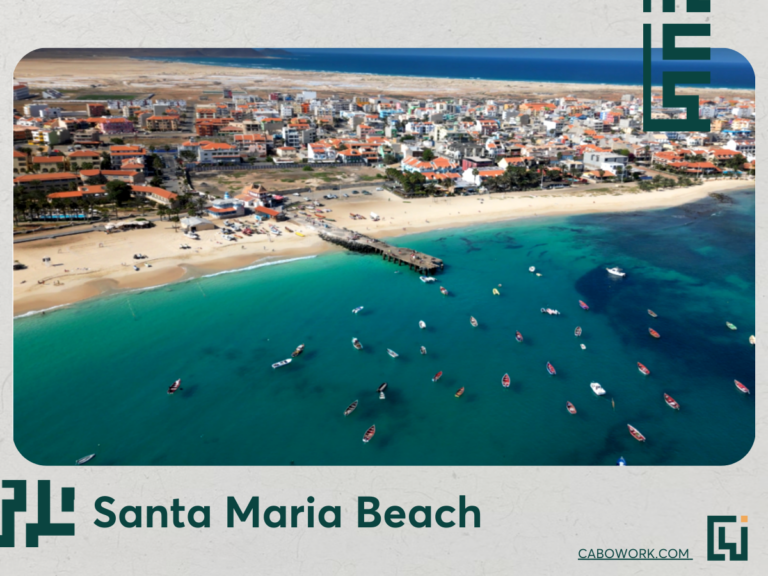
If you’re visiting Cape Verde, chances are you’ll be staying on Sal island. Many hotels on Sal can be found close to Santa Maria Beach, and for good reason too! Sal is by far the most popular island for international tourists, with plenty of amazing restaurants, fun activities, and, of course, the famous Santa Maria Beach.
Honestly, it’s impossible to miss the beach when you’re in Santa Maria, it’s such a popular hub for people to come and relax in the daytime, and enjoy some drinks in the beach bars come nighttime!
Many beaches in Cape Verde do not have lifeguards, however Santa Maria Beach does in the busier areas.
2) Kite Beach (Sal)
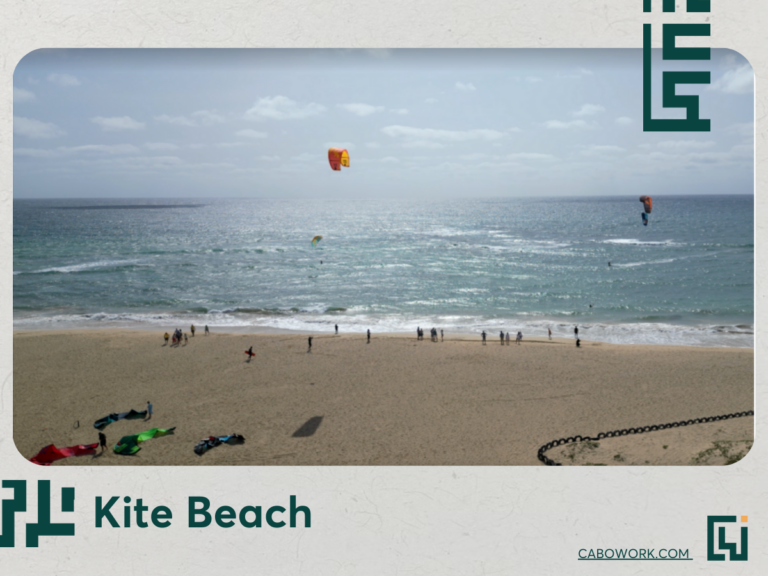
Kite Beach is another great beach on Sal island that’s a hit with locals as well as tourists! It’s just a 0.9 km (0.6 mi) drive from central Santa Maria, and has become a hotspot for kiteboarding enthusiasts and adventure seekers.
Renowned for its consistent trade winds and expansive sandy shores, the beach offers the perfect conditions for kiteboarding, one of our favourite things to do in Cape Verde. While swimming isn’t the main attraction, there are designated areas which are patrolled by lifeguards where you can take a dip!
While there is on-site parking, our recommendation is to grab a taxi from Santa Maria.
3) Tarrafal Beach (Santiago)

Tucked away in the northern part of Santiago island is Tarrafal, a beautiful getaway destination where locals from the capital, Praia, come to unwind after a hard week of work. Tarrafal Beach is a small but beautiful beach, home to a few beach bars which serve delicious caipirinhas – a tasty local cocktail.
As the beach is hidden away in a cove, the water tends to be calmer here, meaning it’s usually possible to go out for a swim!
4) Praia Clarinha (Santiago)
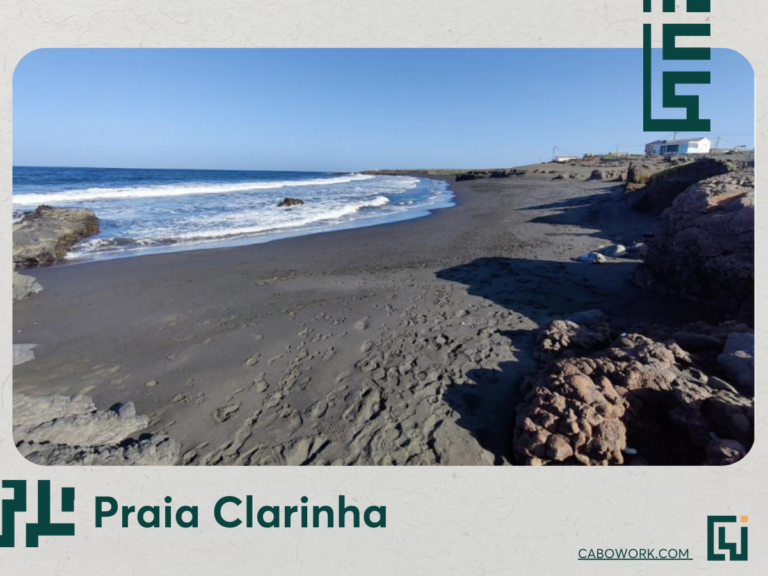
Our second destination in Santiago for swimming is Praia Clarinha, a hidden gem that often gets overlooked by tourists visiting the island. You’ll find the beach close to Pedra Badejo, on the eastern side of the island.
So, what makes Praia Clarinha so special? Well, the most striking feature is the stunning black sands that combine perfectly with the sky-blue ocean. If you have the chance to visit Santiago, we highly recommend that you check it out!
Keep an eye out for the small natural pools that form here when the tide is low, you might spot fish, crabs, and other creatures hanging out.
To get to Praia Clarinha, we’d recommend either taking a taxi from Praia, or if you’re feeling adventurous, taking a collectivo (shared minibus) from town, which is a much cheaper option.
5) Estoril Beach (Boa Vista)
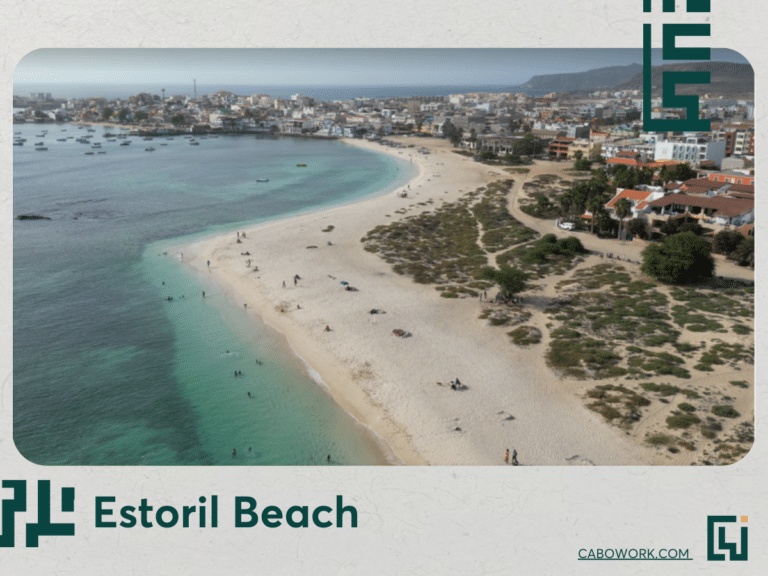
The beaches of Boa Vista really are breathtaking, with soft white sand and some of the clearest water you’ll ever see! That being said, not all of the beaches in Boa Vista are great for swimming (more on this later), so it’s important to stick to beaches that are.
Our number one beach for swimming on Boa Vista has to be Estoril Beach, which stretches along a large part of the western coast of Sal Rei. The water here tends to be calmer, and there’s also a lifeguard on duty during the high tourist season.
6) Laginha Beach (São Vicente)
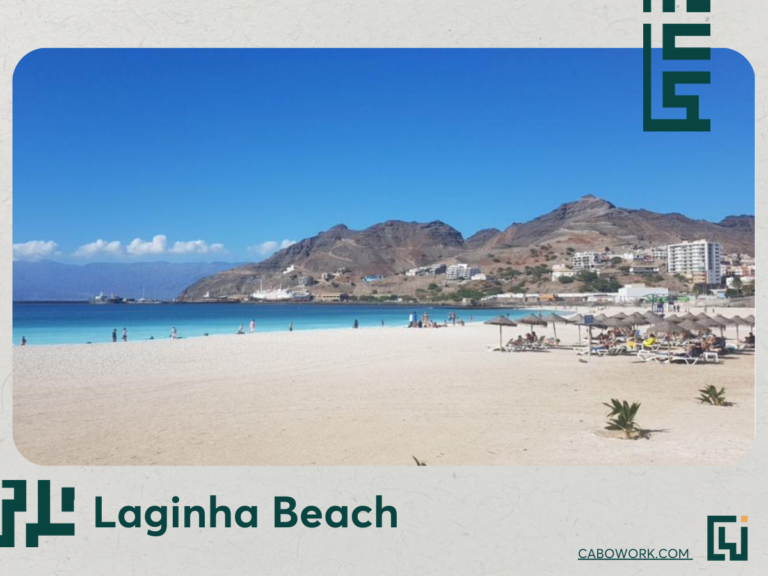
For those looking for a splash of Cape Verdean culture during their trip, you just have to visit the beautiful São Vicente, home to the incredible city of Mindelo – AKA the cultural capital!
If you head to the northern end of the city, you’ll find Laginha Beach with its golden sand, offering some of the best beach vibes you can hope for. Its calm waters also make it a fantastic spot for swimming.
Where Shouldn't I Swim in Cape Verde?
As we’ve seen, there are plenty of areas in the archipelago which offer incredible places to swim for beach lovers; however, there are also areas where you are better off avoiding going for a dip. Let’s take a look.
Santa Monica Beach (Boa Vista)
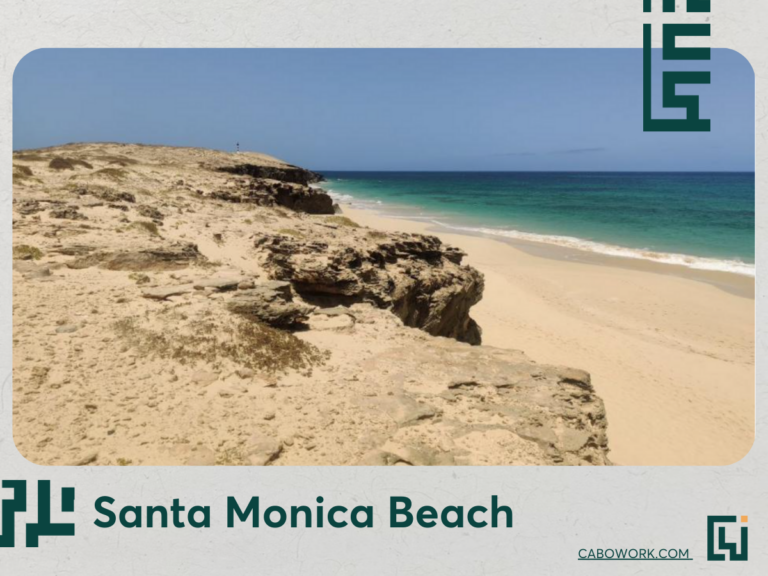
Boa Vista Island is home to many beautiful beaches, including the famous Santa Monica Beach and is a favourite destination for sea turtles! Stretching for over 11 km (6.8 mi), you could literally walk for hours before reaching the other end.
However, the currents around this part of Boa Vista can be very strong, which in turn can make swimming pretty difficult, and even dangerous at times. Also, due to the size of the beach it’s also not manned by a lifeguard, so you will be swimming entirely at your own risk.
If you do want to swim in the sea in Boa Vista, we’d recommend Estoril Beach instead. Many Cape Verde hotels also have fantastic swimming pools, which are perfect for taking a dip if you’re itching for a swim.
When is the Best Time to Swim in Cape Verde?
Because Cape Verde has a windy season between late November and March, the best time to swim in the sea in Cape Verde is between May and September, as this is when winds tend to be calmest. If possible, we recommend you book your trip between these latter months if swimming in the sea is a must-do for you.
That’s not to say that you can’t enjoy a swim during the windy season; however, it does mean it’s a lot more likely you’ll be seeing amber and red flags on the beach instead of green ones!
What to Look out for When Swimming
From our own experience, as well as posts from numerous travellers on Cape Verde forums, there are a few ways to tell if conditions are good for swimming. These include:
